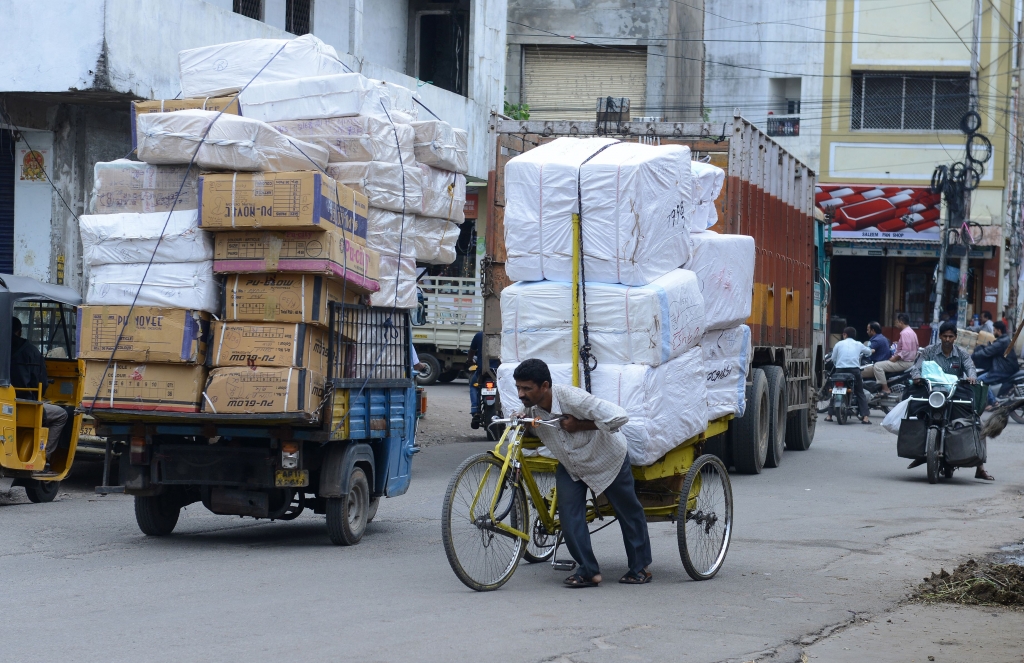-
Tips for becoming a good boxer - November 6, 2020
-
7 expert tips for making your hens night a memorable one - November 6, 2020
-
5 reasons to host your Christmas party on a cruise boat - November 6, 2020
-
What to do when you’re charged with a crime - November 6, 2020
-
Should you get one or multiple dogs? Here’s all you need to know - November 3, 2020
-
A Guide: How to Build Your Very Own Magic Mirror - February 14, 2019
-
Our Top Inspirational Baseball Stars - November 24, 2018
-
Five Tech Tools That Will Help You Turn Your Blog into a Business - November 24, 2018
-
How to Indulge on Vacation without Expanding Your Waist - November 9, 2018
-
5 Strategies for Businesses to Appeal to Today’s Increasingly Mobile-Crazed Customers - November 9, 2018
Target for GST rollout is April 1, 2017: Revenue Secretary
With the goods-and-services tax, known as GST, all goods and services are taxed at the point of consumption rather than production.
Advertisement
India’s 29 states now levy their own sales taxes and protect local producers from competition, dividing the Indian market. It is expected to be hugely beneficial for businesses, especially those that work across state lines, but because it is a destination tax – collected only where goods are consumed – manufacturing states are expected to take a major hit.
Targeting Prime Minister Narendra Modi for not being present in either house of parliament when the GST bill was taken up, the Congress on Thursday said that it was for the first time in independent India that a constitutional amendment bill was discussed, debated and passed without the Prime Minister being present.
The main opposition Congress party had first proposed the GST in 2006 which was then opposed by the now ruling Bharatiya Janata Party.
The country now awaits the implementation of what is said to be one of the most progressive tax reforms since independence.
A government-appointed panel has suggested a standard GST rate of 17-18 percent but Indian states want a higher level.
The amendments seek to clarify that state’s share of IGST will not form part of the Consolidated Fund of India and the term IGST itself would be replaced by Goods and services tax levied on supplies in the course of inter-state trade or commerce.
“Prior to GST, companies in India faced multiple level tax structures, which made it hard for them to conduct business competitively”, Arun Singh, lead economist at Dun & Bradstreet India told AFP. It will be a uniform rate, will check evasion, and boost growth rates, Mr. Jaitley said initiating the debate. Interestingly, he didn’t shy away from giving the Congress due credit for introducing the contentious Bill. Also, there will be no cascading effect of tax on tax, he said adding there are certain items which will either attract lower rate of tax or no tax at all.
The actual tax is still some way off, however, with the government targeting April 2017 for its introduction, a date many experts say is overly optimistic. There are numerous pharmaceutical companies maintaining their warehouses in different states in order to avoid Central Sales Tax (CST) of different states. It was passed by an overwhelming majority in the Rajya Sabha with 197 members voting in favour of the Bill. The GST, he said, will make the system more efficient, increase tax compliance and tax avoidance will become more hard as it will be detected at some stage or the other.
Advertisement
This is just one of a number of tax incentives for solar likely to be removed by the GST, such as 100% tax holiday on earnings for 10 years and concessional excise and custom duties.





























